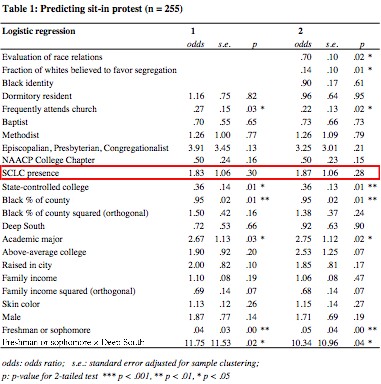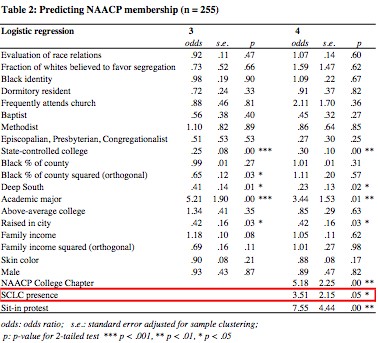
Who Joined the Sit-ins and Why: Southern Black Students in the early 1960s
Mobilization, vol. 11, no. 3, October 2006, pp. 195-211
The wave of sit-ins that swept the American South in 1960 has become a crucial episode in the literature on social movements. To investigate who joined the sit-ins and why, this article analyzes a sample survey of 255 students in Southern black colleges in 1962. The survey includes measures of integration into preexisting social networks. Most surprisingly, students who attended church frequently were less likely to join the sit-ins, though the presence of activist ministers made protest more likely. The survey also includes measures of beliefs and sentiments. Protesters were motivated by strong grievances, for they had an especially negative evaluation of race relations. Yet they were also motivated by optimism about the prospects of success, for they believed—incorrectly—that there was no white majority for strict segregation. The analysis underscores the importance of beliefs and sentiments, which cannot easily be reduced to objective measures of social location.
CORRECTION


The variable for SCLC presence (following Andrews and Biggs 2006) was based on a list of affiliates apparently dating from February 3, 1960. On further scrutiny, we consider the second part of this list to be an entirely separate document, from a later date. The variable should be coded from the first part of the list (securely dated February 3, 1960). Thus corrected, the variable has no statistically significant effect on protest (Models 1 and 2), though it still has a strong positive effect on NAACP membership (Model 4). This result strengthens one of the article's main findings, that frequent church attendance made protest less likely.
Michael Biggs, Department of Sociology, University of Oxford